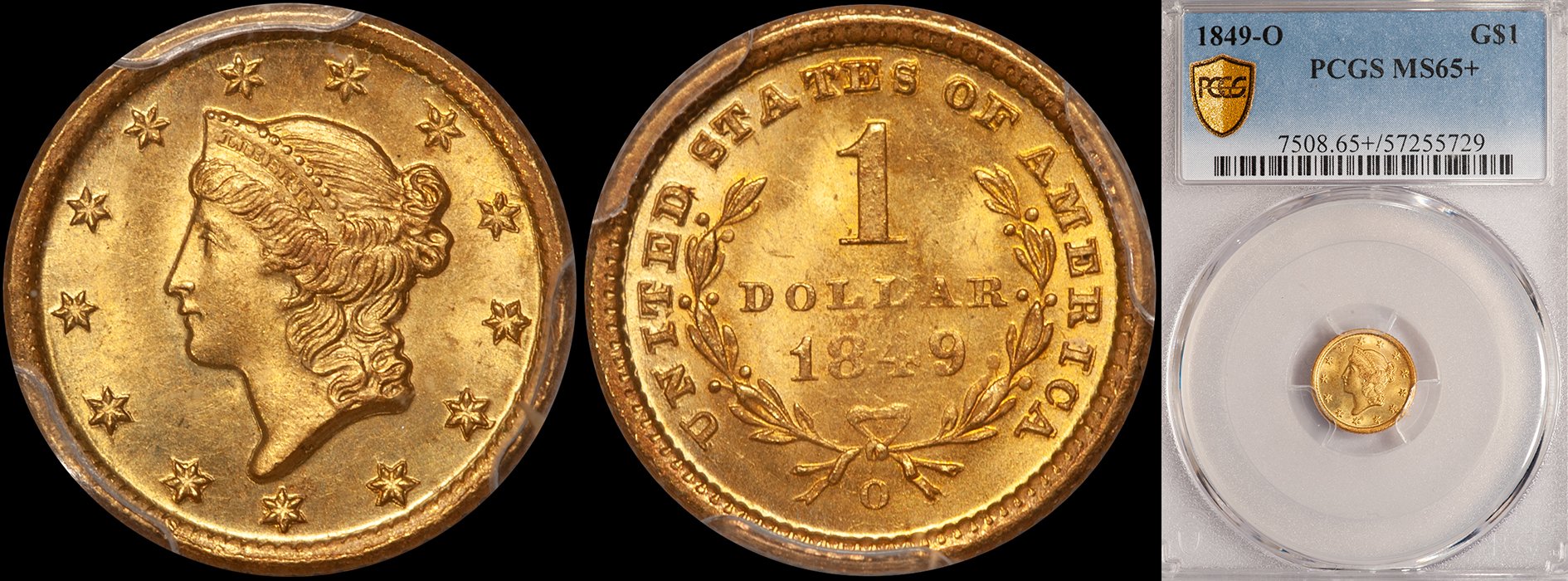The Two Varieties of 1840-C Half Eagle
/Two newly discovered high grade 1840-C half eagles in the Heritage 2011 Platinum Night session of the FUN auction give interesting insight to the emission sequence and striking characteristics of the rare and popular 1840-C half eagle. Prior to the discovery of these two coins, which were graded MS63 and MS64+ by PCGS, there were an estimated three to five known in Uncirculated. The previous finest known, pedigreed to the Pittman sale, is graded MS64. Ironically, that coin was in the sale also (and how thrilled was the consignor of the Pittman coin when he opened the catalog?) and this gave students of Charlotte half eagles an unprecedented opportunity to study the three finest known examples of the 1840-C in one fell swoop.
The two varieties are designated as Variety 1 and Variety 2. The varieties share a common obverse and one that is characterized by a rather amazing mispunched date with one appears to be the tops of a 1 and an 8 coming up from the denticles. The reverse of Variety 1 has a large mintmark placed closed to the stem that is slightly tilted to the right. On the second variety, the mintmark is tilted more towards the left.
Here's a photo of Lot 5108 which is a Variety 1 coin in PCGS MS63. There are a couple of interesting things to note about this coin. The first is the poor overall quality of strike. Look at the weakness on the stars, the hair around the ear of Liberty, the neck feathers and the horizontal lines in the shield. Note as well the roughness at the peripheries. This is a characteristic of this variety: considerable roughness at the borders which is, of course, mint-made.
Even more interesting on the reverse are the extensive die cracks that can be seen at 4:00 and 9:00. This is a very late die state and, clearly, there were very few more coins produced before the reverse literally fell apart and was discarded.
Now let's take a look at Variety 2.
This Variety 2 coin is graded MS64+ by PCGS and it is easily the finest known. In fact, the coin is really "as struck" but probably didn't grade MS65 because of the roughness at the obverse center, as made.
The first thing you will probably gauge is how sharp the strike is in comparison to Variety 1. The stars have full radial lines, the denticles are complete and separated and the roughness seen at the inner border on the previous coin is lacking. Note, as well, how sharp the details are on the eagle in comparison to the previous coin.
But the most intruguing thing about this coin is the lack of reverse die cracks, except for a small one at the eagle's right wingtip.
Perhaps the most interesting thing about the two coins is, in some ways, one of the most subtle. You probably won't be able to tell from these photos but on the earlier use of this obverse (lot 5110) there are small die lines that run in from the border. On the second coin (lot 5108) these lines do not exist and they have been removed by the mint (this process is known as "lapping.")
What does this prove? That the sequence of these coins, as proposed by me, is incorrect and Variety 2 was actually made first. The reason that Variety 1 coins look so worn and weak is that they were made later in the production run, probably after the obverse die was lapped.
Ironically, neither of the two newly discovered 1840-C half eagles sold at the auction. This wasn't the result of a lack of bidder interest (I would have been thrilled to buy both coins) but because the reserves placed on both lots by the consignor were too high.
I can't imagine there will be many other times that collectors will be able to see such fresh, high grade Charlotte half eagles in one place and that each coin will not only be a different die variety but will have an entirely different "look" as a result.
Thanks to Heritage Auctions for allowing me to use the images of the two 1840-C half eagles above.












